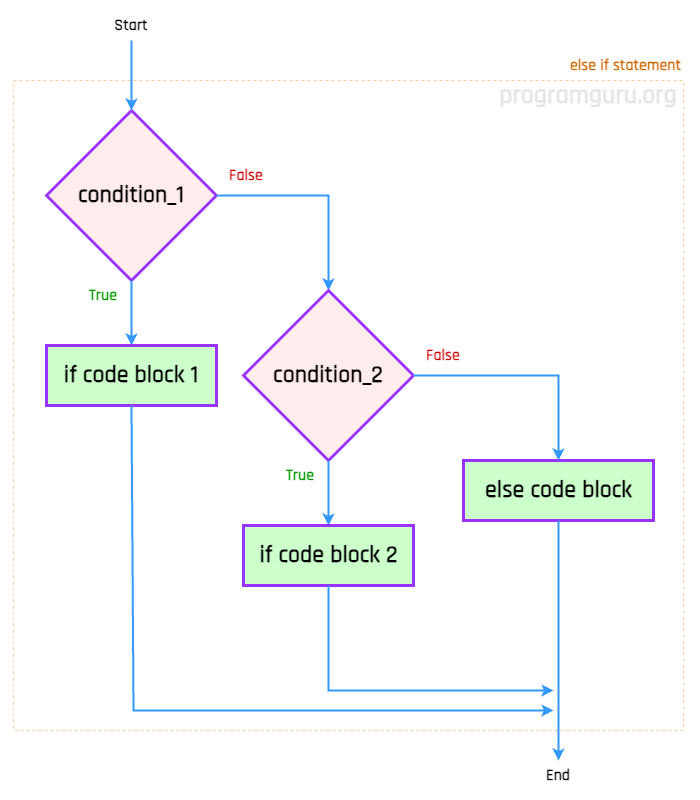In this tutorial, we will learn about else-if statements in Dart. We will cover the basics of conditional execution using if-else-if statements.
An else-if statement is a conditional statement that allows multiple conditions to be tested sequentially. It provides a way to execute different code blocks based on different conditions.
The syntax for the else-if statement in Dart is:
if (condition1) {
// Code block to execute if condition1 is true
} else if (condition2) {
// Code block to execute if condition2 is true
} else {
// Code block to execute if none of the conditions are true
}The else-if statement evaluates the specified conditions in order. The first condition that is true will have its code block executed; if none of the conditions are true, the code block inside the else statement is executed.

num.num.num is positive, negative, or zero.num is positive, negative, or zero.void main() {
int num = -5;
if (num > 0) {
print('$num is positive.');
} else if (num < 0) {
print('$num is negative.');
} else {
print('$num is zero.');
}
}-5 is negative.
marks.marks.marks.void main() {
int marks = 85;
if (marks >= 90) {
print('Grade: A');
} else if (marks >= 80) {
print('Grade: B');
} else if (marks >= 70) {
print('Grade: C');
} else if (marks >= 60) {
print('Grade: D');
} else {
print('Grade: F');
}
}Grade: B
temperature.temperature.temperature.void main() {
double temperature = 75.5;
if (temperature > 100) {
print("It's extremely hot.");
} else if (temperature > 85) {
print("It's hot.");
} else if (temperature > 60) {
print("It's warm.");
} else if (temperature > 32) {
print("It's cold.");
} else {
print("It's freezing.");
}
}It's warm.